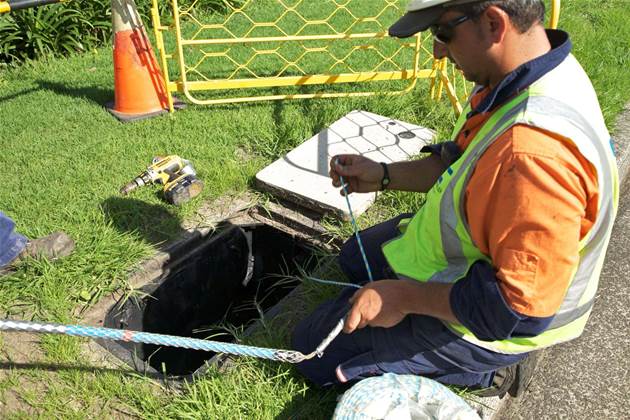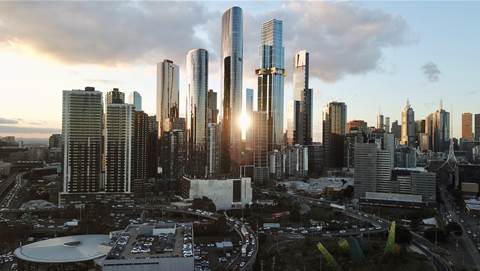NBN Co’s annual corporate plan delivery is always slightly chaotic: once again, 74 pages of financials and projections on one of Australia’s most important projects.

To make it simpler, iTnews has pulled out the top five things to take away from the plan from 2018 through 2021.
1. This isn’t ADSL anymore
NBN Co CEO Bill Morrow left his most impassioned plea out of the corporate plan, but he was still keen to deliver it to retail service providers (RSPs) that have complained for the past month about the NBN financial construct.
Morrow’s message today to RSPs dispensed with the vitriol of past engagements.
It was simple and to the point: stop trying to apply ADSL thinking to the NBN.
“The ADSL model had a fundamentally different cost structure for the RSP than what the NBN model does,” Morrow told an analyst briefing.
“Remember the whole point we’re doing this [project] is that people felt they were hitting a ceiling on ADSL - that they couldn’t consume more data, and for a quarter of the country they couldn’t even get a broadband access service.
“So we come along through this economically commercially viable model, we overlay on top of that network, upgrade that network to give the greater speed capability to relieve that feeling that was there before.
“But as long as the retailer is saying 'I’m just going to map you over like you’re an ADSL-based consumption model at the price that you had before', they aren’t monetising that growth [in capability].”
Morrow said a straw poll of the biggest RSPs showed they were charging the same for an ADSL service as they are for NBN. He said there were a few smaller RSPs trying to “push up the price game” by offering higher speed plans - with “some success” - but they were still in the minority.
In addition to failing to monetise the difference between ADSL and NBN, Morrow also said RSPs complaining of margin squeeze were forgetting that they had acquisition and scale-up costs now that would not continue in future.
“The cost-to-connect component does not exist in the end,” he said. “Of course expenses are going to be higher now but that will taper off in future and margins will come up.
“It’s very important to understand the journey that we’re on.”
2. Ghost premises impact fizzles
NBN Co went into this corporate plan knowing it would need to revise down the number of premises it would ultimately reach.
Though that revision could have been as high as 700,000, NBN Co today said 300,000 phantom premises had dropped off its map (though some additional changes are still possible as crews reach into more areas).
Interestingly, the financial impact looks negligible.
Though its total premises number falls from 11.9 million to 11.6 million, NBN Co is maintaining last year’s forecast of 8.1 million active homes and businesses by 2020.
However, it will now take a year longer for NBN Co to hit a number of active premises that is in line with its promised take-up rate of between 73-75 percent (it is forecasting 8.6 million active users by FY21).
A slight revenue impact is anticipated: going from $3.7 billion to $3.5 billion in FY19 and from $5 billion to $4.9 billion in FY20. This is perhaps less of a financial hit than expected.
3. The fixed mix shuffle
Fibre-to-the-premises (FTTP) will make up a lesser percentage of the full rollout than previously thought.
In the last corporate plan, FTTP was anticipated to connect between 2 and 2.5 million homes and businesses - about 17-21 percent of the rollout.
However, it is now expected to reach between 1.8 and 2.2 million premises.
NBN Co also slightly scaled back the potential number of premises to receive FTTN/B/C. Up to 6.5 million premises had been in line for these connections, but the top of the scale is now 6.3 million.
The main boost is to the HFC footprint: at minimum, 100,000 extra premises have been added. In other words, the minimum size of the footprint is now 2.6 million, up from 2.5 million.
It’s likely much of the reshuffle is simply a by-product of 300,000 homes and businesses being found to be ghost premises - it seems most were destined to get FTTx.
4. FTTC in cost per-premises for the first time
After much fanfare, NBN Co finally updated its fibre-to-the-curb cost per premises number: a full $100 more than earlier expectations, at $2900.
In the short term, that’s unlikely to help anyone lobbying for more FTTN replacement with FTTC: the cost gap between the two access technologies is widening, though it is expected to narrow again by FY20.
On the FTTP side, brownfields costs continued to stagnate - $4403 in FY17 compared to $4411 in FY16. FTTP in greenfields, however, is falling as expected. It went from $2608 in FY16 to $2393 in FY17, and NBN Co believes this can be brought down to $2100 by FY20.
HFC costs remain parked at around $2300. NBN Co initially under-estimated these costs at $1800, but the latest figures peg them at $2258, with some further increases expected.
An interesting side note is that servicing less dense areas with fixed wireless isn’t quite as expensive as NBN Co had thought. Last year, NBN Co forecast the current cost (around $3550) would rise to $4600 as the last deployments are made, but this has now been revised down to max out at $4300.
5. ARPU stutters but stays high
Hikes in broadband prices are still on the horizon as NBN Co appeared to maintain its existing projections for average revenue per user (ARPU).
In the last corporate plan, it said ARPU would rise from today’s stagnant $43 a month to $52 a month by FY20. It didn’t repeat that assertion in the current plan, though it says ARPU will hit $52 by FY21, a year later than thought.
This is expected to be in part achieved by a more aggressive play in the high-value business and enterprise market - a move currently drawing considerable criticism from the private sector.
However, NBN Co also said ARPU would rise “with expected end-user willingness to pay, increased data consumption” and the migration of customers onto higher speed tiers.
“We have done third party studies that strongly suggest people are willing to pay more for better broadband,” NBN Co CEO Bill Morrow said today.
“In fact, [in] the study we had 40 percent of them say they’d be willing to pay $12 more.”



















